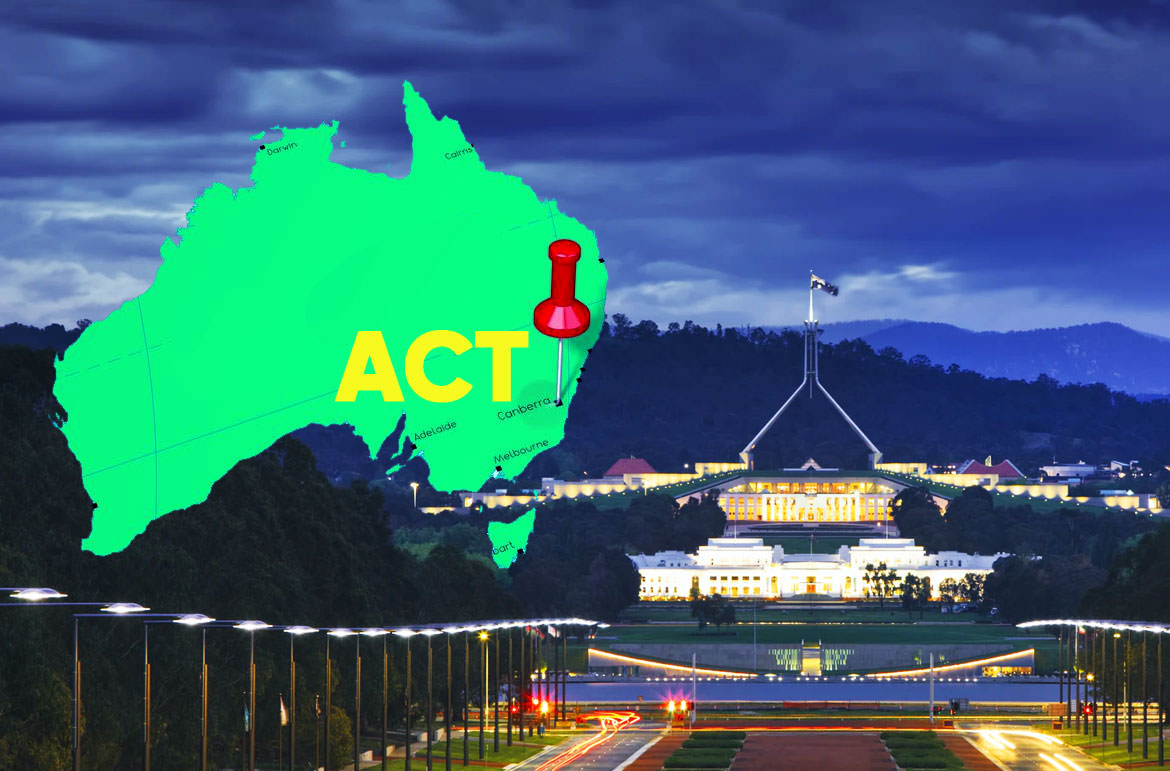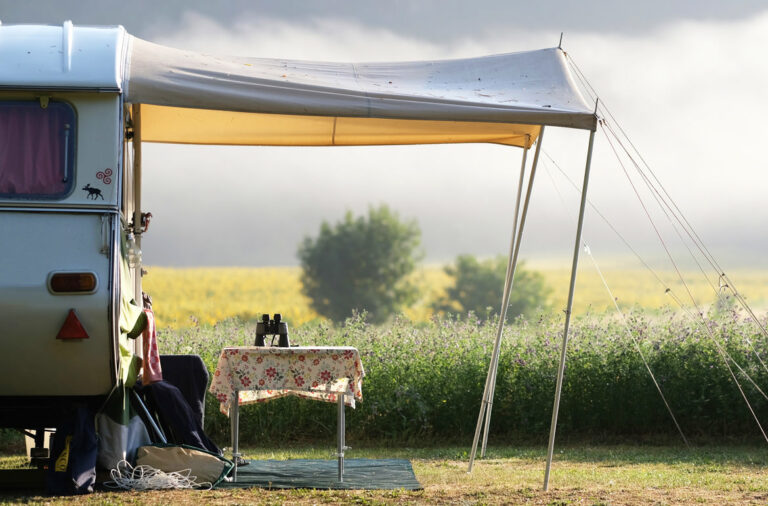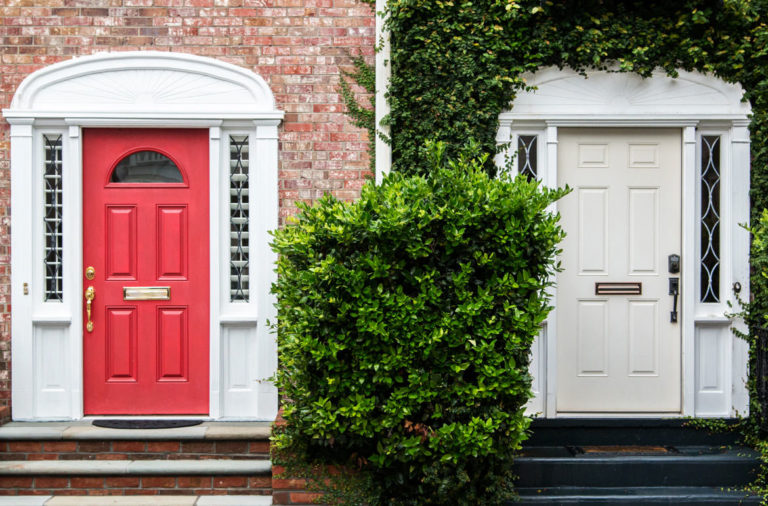
When planning a granny flat in the ACT, you must know your regulations. I have noticed these can be hard to find. So, here is a summary of rules for Granny Flats in the ACT:
A granny flat, known as a “secondary residence” in the ACT, can be anywhere from 40sqm – 90sqm. You must have a minimum land size of 500sqm and it must be in a residential zone. It must be a water sensitive urban design and suit the needs of people with disabilities. It can be rented out, but you must provide private open space for tenants plus one car parking space.
Today, I will discuss how to build a granny flat on your ACT property.
DON'T PAY A FORTUNE FOR YOUR GRANNY FLAT. Find out how to deal with council and build a granny flat for the lowest cost possible. Learn More.
I will talk about the costs to build a granny flat in the ACT. Plus the specific regulations for a granny flat in Fyshwick.
Finally, I will provide you with a list of recommended granny flat builders in the ACT.
Can You Build a Granny Flat on Your ACT Property?
Regulations
Granny flats are known as “secondary residences” in the ACT, and they are covered under the Planning and Development Regulation 2008.
They must be:
- On a property a minimum of 500sqm.
- 40sqm minimum – 90sqm maximum.
- Compliant with the total plot ratio allowable for the block (i.e. 50% when combining the size of the house plus the secondary residence on a 500sqm lot).
- In a ‘residential’ zone.
- Compliant with the Australian Standard AS 4299 Adaptable Housing (Class C). That is, “easily adaptable to suit the needs of people with disabilities“. A floor plan must be submitted to your Council, showing adaptability can be attained. You may find the Australian Government’s site helpful as to what is expected.
- A “water sensitive urban design” – meaning, the development achieves a minimum 40% reduction in mains water consumption. A water tank will help, they can capture almost 40%.
- Compatible with exterior building materials of existing buildings in the neighbourhood.
- Compliant with setbacks.
You must provide:
- Private open space for tenants, compliant with plot ratios (see Element 5 of the Single Dwelling Housing Code).
- Reasonable levels of privacy for adjoining residential blocks, including solar access to their dwellings.
- Clear, unobstructed pedestrian access.
- At least one car parking space, which cannot be in the ‘front zone’.
Note: Your Council may be flexible with the car being in the ‘front zone’, if there is enough room for it to be screened from the main road. You will have to confirm with them.
Gaining Approval

Before breaking out the tools. Be sure to cover the rules below.
Development Approval for secondary dwellings is primarily governed by the Planning and Development Act (2007).
The process for assessing development proposals is known as “merit”, and here are the steps:
- Lodge your Development Application with your local Council.
- The local Council performs a Completeness check, confirming you have met the minimum requirements.
- If minimum requirements are met, fee advice is sent. If not, they request further information.
- Once the application has been formally lodged, you pay necessary fees.
- The Environment, Planning and Sustainable Development Directorate (EPSDD) can request further information.
- Application decided.
However, Development Approval may not be required for secondary residences if they comply with:
- The rules in the Single Dwelling Housing Code.
A private certifier will confirm whether your development proposal:
- Meets all the criteria, allowing it to be exempt from Development Approval.
Building approval will still be required (see below).
Public Notification
As your development is in a residential area, it is mandatory that:
- Discussions with surrounding neighbours take place during the design stage.
This ensures your proposal considers any issues that may arise. There are two types of public notifications:
- Minor notification – Your adjoining neighbours receive letters advising them of your proposal.
- Major notification – Your adjoining neighbours get a letter, and a sign is placed on site notifying the public.
After the Completeness check is finished, your proposal will be
- Publicly registered with the Planning Departments Public Notification register.
So, if the public or your neighbours feel your proposal may impact them, they can submit a written representation.
Building Approval
The process for gaining building approval is:
- Appoint a licensed building surveyor as your certifier.
- Apply for building approval with your local Council, pay necessary fees.
- Employ a licensed builder (you can do this yourself if you have the license as an “owner-builder”).
- Pay relevant fees to the ACT Government.
Then, you can begin building.
Costs to Build a Granny Flat in the Australian Capital Territory
Prices for granny flats in the ACT can range on average from $100 000 – $160 000 for a standard design.
If you want a custom-made design, expect to pay up to $200 000.
Keep in mind, when discussing price, usually only the following components are included:
- Building walls
- Roofs
- Floors
- Doors
- Windows
Excluded from the price is:
- Council fees (see below)
- Site works (not necessary if your site is easily accessible)
- Building surveyor Roughly $1000
- Parking (obtain quotes from concreters)
The application fee for a Development Approval is calculated in accordance with the Building Cost Guide and can be seen here.
Public Notification fee:
- Major notification (includes one sign) $1,236.00
- Minor notification $306.00
Extra costs can accumulate quickly.
So, it’s important you get your plans right from the start.
You’ll need to know some details about your block. Before you begin preparing plans, find out about:
- Your zone – The ACTMAPi can be used to find your zone, and whether a secondary residence is allowed.
- Heritage considerations – Check the ACT Heritage Register.
- Your “lease purpose clause” must state your land permits a specific use prior to you lodging a DA – This can checked on ACTLIS. Every search will cost $30, but is important, as if not correct before lodging a DA, you won’t be approved.
Instead, you will need to submit another application, costing $2400.
- As the owner of your property, it is your responsibility to ensure there is enough space to bring in equipment.
If you build too close/over network infrastructure and mains, you are accountable for the thousands it can cost in repair work.
To save the hassle, before making plans contact:
- Icon Water for water and sewerage utilities and
- Evo Energy for electricity and gas utility infrastructure
On or near your property.
Another handy page to view is:
- The Minimum Documentation Requirements Checklist – This is what the DA Gateway team requires for the Completeness check.
To save some money on construction, contemplate doing the manual labour yourself .
Granny Flat Regulations in Fyshwick
When talking to the Planning Department about building a secondary residence in Fyshwick, they get a little uneasy.
That is because very few have been approved in Fyshwick – it is mostly an industrial area, not residential.
You can check your properties zone by:
- Using the ACTMAPi, or
- Phoning Access Canberra on 13 22 81 and speaking directly to the Planning Department.
There are also very strict regulations in this Council, including:
- Front doors must be 920mm wide
- Internal doors must be 870mm leaf (open to 850mm)
- Hallways must be 1000mm minimum
- Bathrooms need 1550mm circulation space, living areas 2250mm
Some of these can be created by making changes after, but this can be difficult and costly.
If you wish to build a secondary residence in Fyshwick, I recommend you speak to the Planning Department directly to find out your chance of approval.
Rules for “Mobile” Transportable Homes in Canberra
Tenants who are experiencing hardship may seek permission from Housing ACT to temporarily site a mobile unit at their home.
Council can still have regulations for the units, including:
- It must sit in the rear of the yard.
- It must comply with requirements from the ACT Planning and Land Authority and, for electricity connections, ACTEWAGL.
- They are designed for short-term use, to ease a short-term issue – a maximum of 6 months.
- After this a permanent solution should be found, and if you don’t think this is achievable, you won’t receive permission.
*Please note – this information has been gained from the ACT Government and is subject to change.
For up-to-date information, visit their site.
List of Granny Flat Builders in the ACT
Bleow is a list of trusted Granny flat builders in the ACT:
- Canberra Granny Flat Builders – 1300 979 658
- Capital Homes – 0401 062 591
- The Pod Canberra – 1300 843 763
- Cubitt’s Classic Home Improvements – 1300 721 150
- Fortified Building – 0434 520 762
- McDonald Jones Homes – 1300 555 382
- Canberra Structures – (02) 6299 6735
- Aztec Building Solutions – 0439 299 277
- VRD Developments
- ACT Granny Flats – 0418 492 033
- FirstSheds – 6242 5922
Conclusion
In 2013, changes were made to the ACT Government’s planning laws when they introduced Variation 306, allowing secondary residences to be:
- Built a minimum of 40sqm to a maximum of 90sqm (previous limit being 75sqm).
This change also removed the rule that occupants must be related to the residents of the primary dwelling.
Your secondary residence must be:
- In a residential zone.
- On a property a minimum of 500sqm.
Design regulations include that it must:
- Suit the needs of people with disabilities.
- Achieve a minimum 40% reduction in mains water consumption.
- Provide private open space for tenants.
- Have one car parking space.
You can apply for Development Approval with your local Council, who will perform a Completeness check based on “merit”. Or, you can hire a private certifier to advise if your proposed development is exempt from development approval.
Then you can gain Building Approval and expect to pay anywhere from $100 000 – $200 000. However, do your research first, as this price excludes, amongst other things, Council fees.
To find out more about building your own granny flat contact us as any time.












